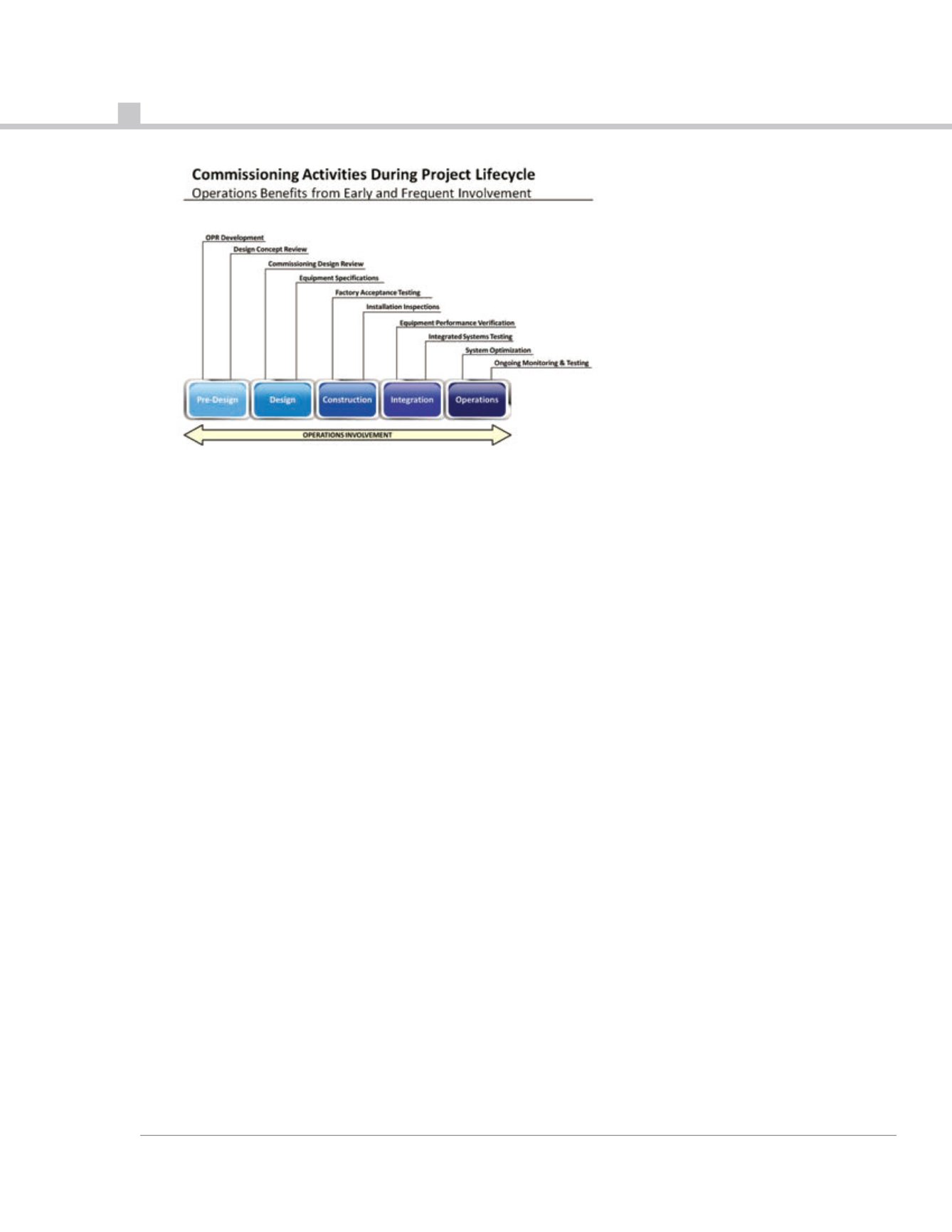

26
7X24 MAGAZINE SPRING 2015
involves some trial and error. The
commissioning team often works with
the design / construction / vendor
team to troubleshoot issues
throughout commissioning.
Operators who have exposure to this
troubleshooting will benefit from a
better understanding of the
equipment, in addition to developing
valuable historical knowledge of what
has occurred prior to operation.
Additionally, it is an opportunity for
operations to start to develop
processes for future troubleshooting.
Relationships are often built during
the integration of a facility where
members of the design, construction,
commissioning and operations teams
are all working together. This can be
a stressful time but often the best
resources from many corners of the
team become evident during the
process. Technical resources in
equipment manufacturing
organizations, start-up technicians,
design professionals, and MEP
coordinators all can prove valuable
contacts to operations over the years
to come.
One of the first steps in learning is
recognizing what is normal and what
is not. During functional testing
commissioning teams stress the
systems to baseline the performance
and ensure that it works in a variety of
expected operating conditions.
Component and system anomalies
are expected during functional testing
where equipment operation is often
validated at design capacity. These
anomalies are very revealing in
demonstrating the consequences of
failure. As a result, facility operators
who have witnessed and participated
in these evolutions are much better
prepared to respond to issues once
the facility is serving live traffic.
Participating in this phase provides
the base of knowledge that facility
operations will need for the
development of emergency operating
procedures. Having access to, and
knowing how to perform these
procedures can dramatically minimize
the impact of outages.
In addition to improving notification
and response time, monetary value is
realized by making adjustments with
an understanding of what is or is not
a truly service affecting event.
Examples of this include what spare
parts are maintained on hand, how
service agreements are established,
and how sites are staffed.
Levels 4 and 5 commissioning are the
beginning, but not the end of
integration and optimization. Many
data center owners encourage, if not
expect, continuous improvement in
this dynamic environment.
Improved reliability, energy
conservation, and adoption of new
technologies for efficiency gains are
often a part of an operations team’s
objectives. Participating in
commissioning provides operators
with a base of knowledge that allows
them to better recognize those
opportunities for continuous
improvement.
CONCLUSION
Commissioning agents and data
center design build departments
should consistently encourage
participation by facility operations
with engagement beginning in the
planning stages of their projects.
For this to be successful, facility
operations teams have to make the
time to participate in the process.
Doing so requires support from the
organization which is easily justifiable
considering the significant payoffs.
The majority of data center outages
are the result of human error. A
critical aspect of providing operations
with the tools they need, begins with
their active involvement in
commissioning.
When integrated into the
commissioning process, data center
organizations consistently find their
operations teams are more proactive
in responding to abnormal or
emergency situations and more
effective in the day-to-day operation
of the facility.
All of this is achievable with relatively
little additional effort by simply
defining the requirements up front
and ensuring thorough planning.
Brian Durham is the Vice President of Field Services for DLB Associates Consulting Engineers. He can be reached at
[email protected]
















